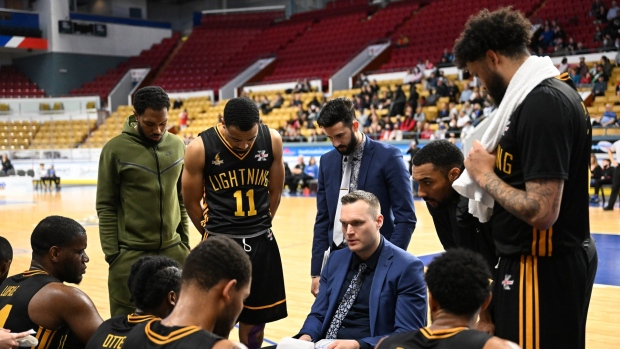Jun 14, 2022
‘Lots of promise ahead of us’: NBL Canada optimistic following return from two-year absence
When the National Basketball League of Canada’s board members gathered for a meeting in London, Ont., on Tuesday, there was much more to celebrate compared to the last couple years.
, TSN.ca Staff

When the National Basketball League of Canada’s board members gathered for a meeting in London, Ont., on Tuesday, there was much more to celebrate compared to the last couple years.
Although just four teams emerged from the rubble of the pandemic, the league was able to find a way to conduct its 10th season without the hindrance of health and safety regulations that had kept the NBL-C off the court since March of 2020.
For the 2021-22 season which began in February and culminated with the London Lightning crowned as champions in early June, the NBL-C formed a partnership with The Basketball League.
Moreover, the NBL-C decided to join forces with a familiar face in David Magley, the president of the TBL who had previously served as commissioner of the NBL-C.
The partnership saw the NBL-C’s four remaining teams – all based in Ontario – play a total of 24 games against eight teams from the United States-based TBL in addition to its own regular-season slate.
“We finished playing a very important season for our league and I'm extremely pleased that we played our 10th anniversary season,” said Audley Stephenson, who is on the verge of being promoted from vice president of basketball operations to commissioner of the NBL-C.
“We knew collectively that we just wanted to build on that. So, yes, we played a historic 10th season, but now we're looking ahead and want to make sure that we're firmly in place for the next 10 years as a league. Things look good.”
Stephenson indicated that the NBL-C has decided to continue as well as expand the partnership with the TBL.
The league will still crown its own champion each season, but is exploring the idea of also holding a Cup championship with the TBL.
For the time being, the NBL-C will have to push forward without the Atlantic Division. Nevertheless, Stephenson understands the importance of re-establishing a presence on the East Coast when the time is right.
“We know we have to rebuild and we intend on doing that,” said Stephenson. “I don't believe it's realistic to be able to say for next season, given that we want to have schedules in place early.
“We want to make sure we give that time and have the right people in place instead of rush something just to have a team there, that's not something that we feel good about. The Atlantic Division is still very much the roots of the league and so we know we're going to hold firm to our commitment.”
Stephenson did reveal the NBL-C is planning to announce the addition of two new teams for next season, with Montreal as a possible location for one of those clubs.
Many more teams could also potentially be established over the next three to five years as the NBL-C intends to lessen the barriers to entry for new owners.
“Before we were very specific and had strict parameters,” said Stephenson. “You had to have a jumbotron and you had to be in an OHL arena. Those sorts of things were considered prerequisites.
“All we're saying now is we're going to look at that deeper and really make the decision to evaluate what makes sense for a specific market. I'm not suggesting that [existing] teams are going to be moving or anything of that nature. But more so for incoming teams and how we work with them closely to make it easier for them to be a part of our league.”
Despite the long hiatus that left just four teams standing, Stephenson says the team owners never discussed the idea of disbanding.
Instead, the NBL-C actually strengthened its resolve to remain as a staple of professional basketball in Canada.
“There is a commitment to what we started 10 years ago and to see it continue to grow,” said Stephenson. “The reality is, we know coming out of a two-year break and losing a couple of teams – we know there's a lot of work to be done.
“The part that gets me charged is recognizing that we have to operate as a league at a pace that we've never operated before in terms of the speed at which you have to make things happen and to advance the brand forward. The league isn't shutting down at all. We played with four teams, but we knew that this was just a temporary stopgap until we got to the other side. We're at the other side and we see lots of promise ahead of us.”

